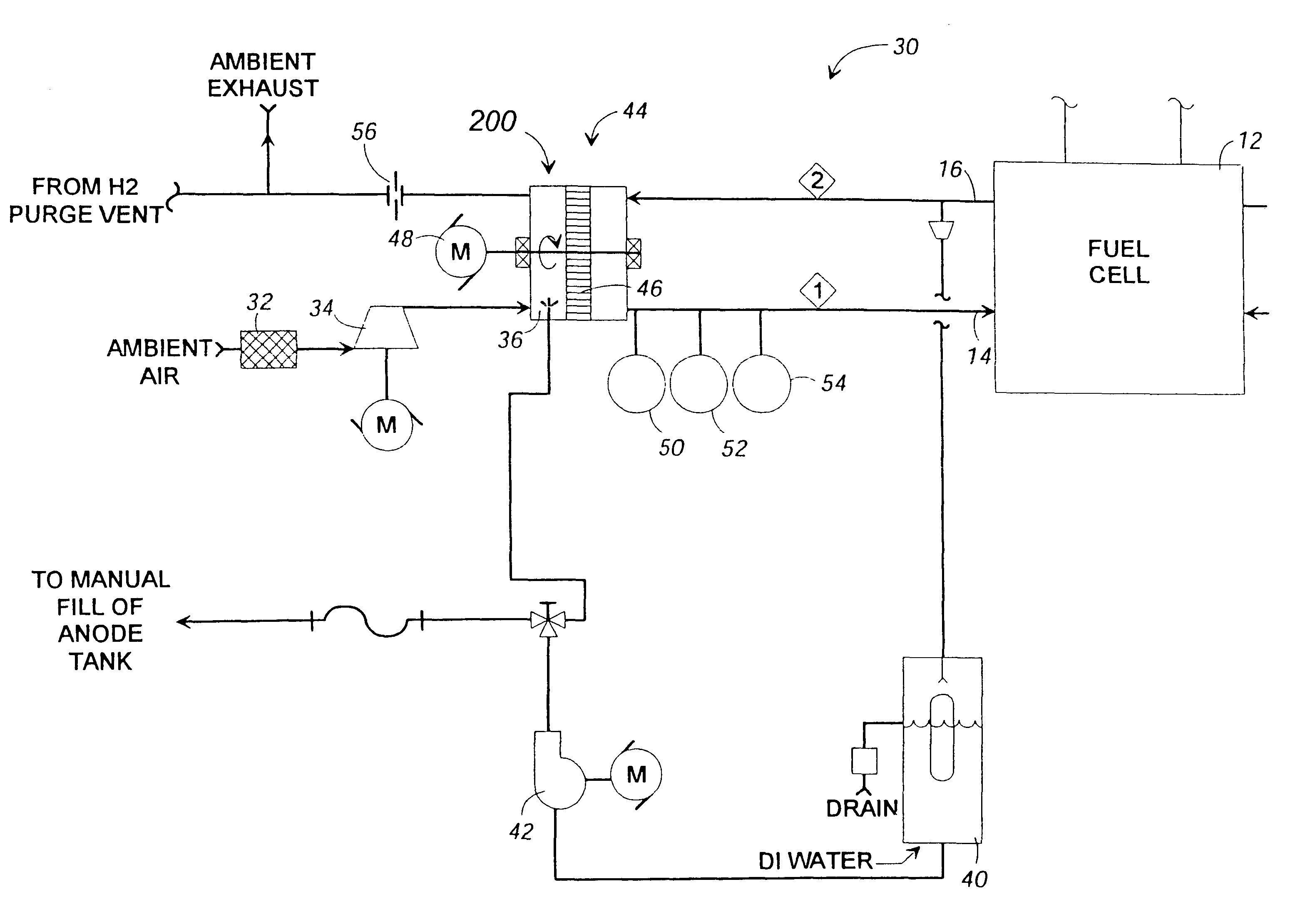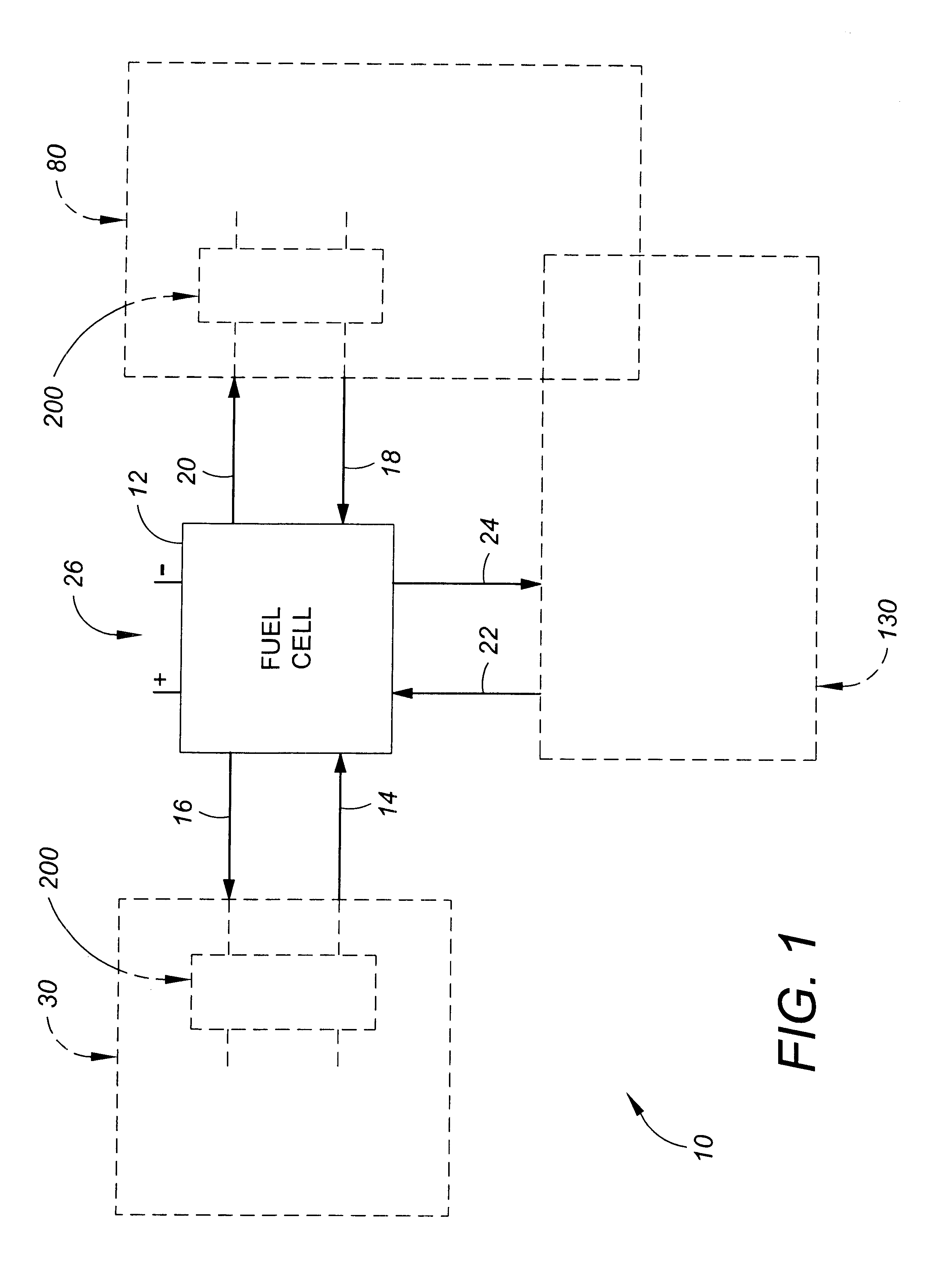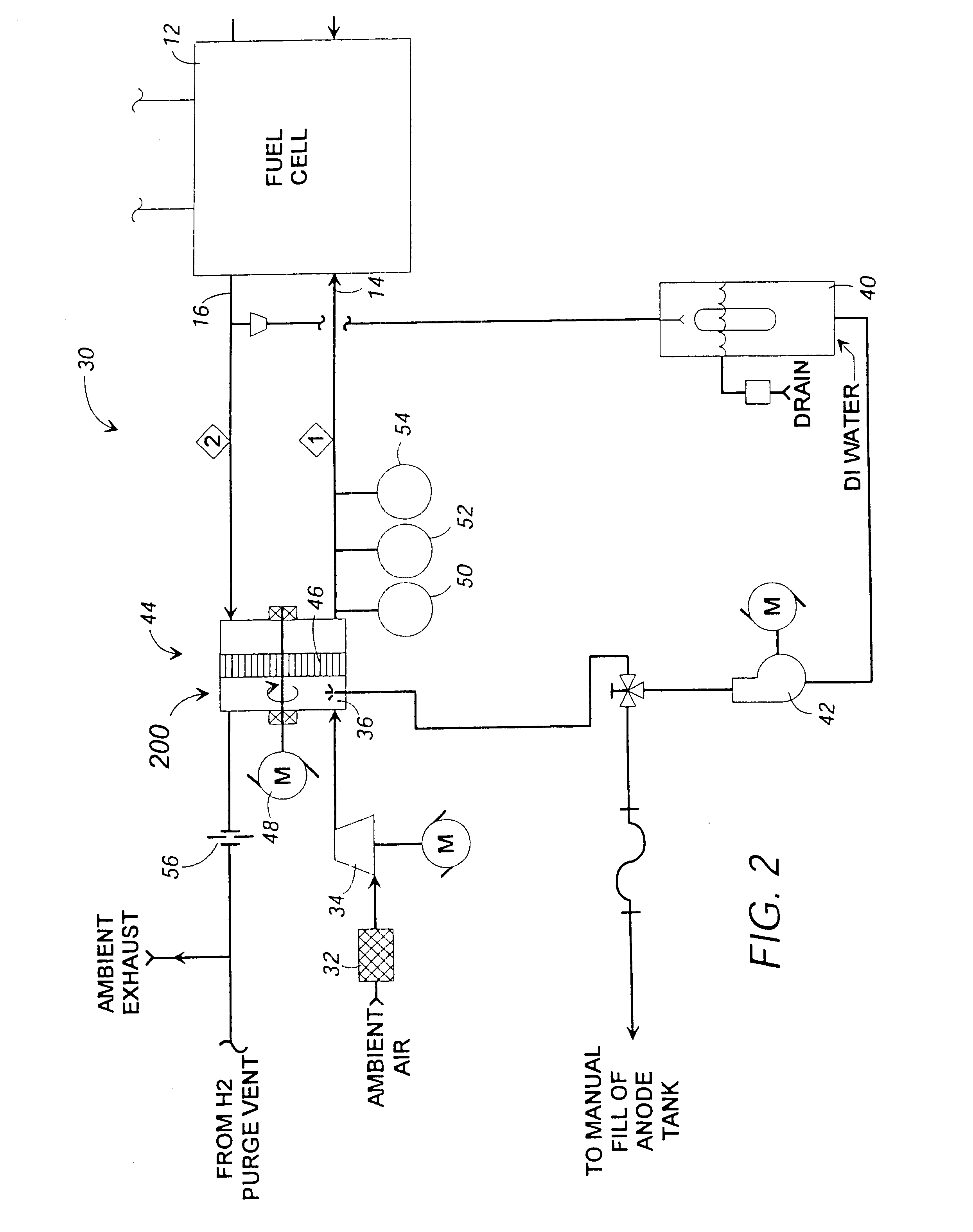Fuel-cell engine stream conditioning system
a technology of stream conditioning and fuel cells, applied in the direction of fuel cell control, fuel cell generators, electric generating generators, etc., can solve the problems of reducing system efficiency, weight of system components, and inefficient humidification system type for automotive applications
- Summary
- Abstract
- Description
- Claims
- Application Information
AI Technical Summary
Benefits of technology
Problems solved by technology
Method used
Image
Examples
Embodiment Construction
Referring now in detail to the drawing figures wherein like reference numerals represent like parts throughout the several views, the present invention 200 is described in the context of a preferred embodiment, namely, a system for the management and control of various flow streams related to the operation of a fuel cell engine having a fuel cell 12. This system conditions at least one stream in communication with a fuel cell. A preferred fuel cell gas management system 10 having a fuel cell is illustrated in FIG. 1. As described above, this is only one of a number of embodiments of the present invention.
The gas management system 10 of FIG. 1 comprises a cathode humidification system 30, an anode humidity retention system 80, and a cooling water processing system 130, all connected to the fuel cell 12. The fuel cell 12 generally comprises a cathode inlet 14, a cathode exhaust 16, an anode inlet 18, an anode exhaust 20, a cooling water inlet 22 and a cooling water discharge 24. Elect...
PUM
| Property | Measurement | Unit |
|---|---|---|
| temperature | aaaaa | aaaaa |
| latent heat | aaaaa | aaaaa |
| sensible heat | aaaaa | aaaaa |
Abstract
Description
Claims
Application Information
 Login to View More
Login to View More - R&D
- Intellectual Property
- Life Sciences
- Materials
- Tech Scout
- Unparalleled Data Quality
- Higher Quality Content
- 60% Fewer Hallucinations
Browse by: Latest US Patents, China's latest patents, Technical Efficacy Thesaurus, Application Domain, Technology Topic, Popular Technical Reports.
© 2025 PatSnap. All rights reserved.Legal|Privacy policy|Modern Slavery Act Transparency Statement|Sitemap|About US| Contact US: help@patsnap.com



